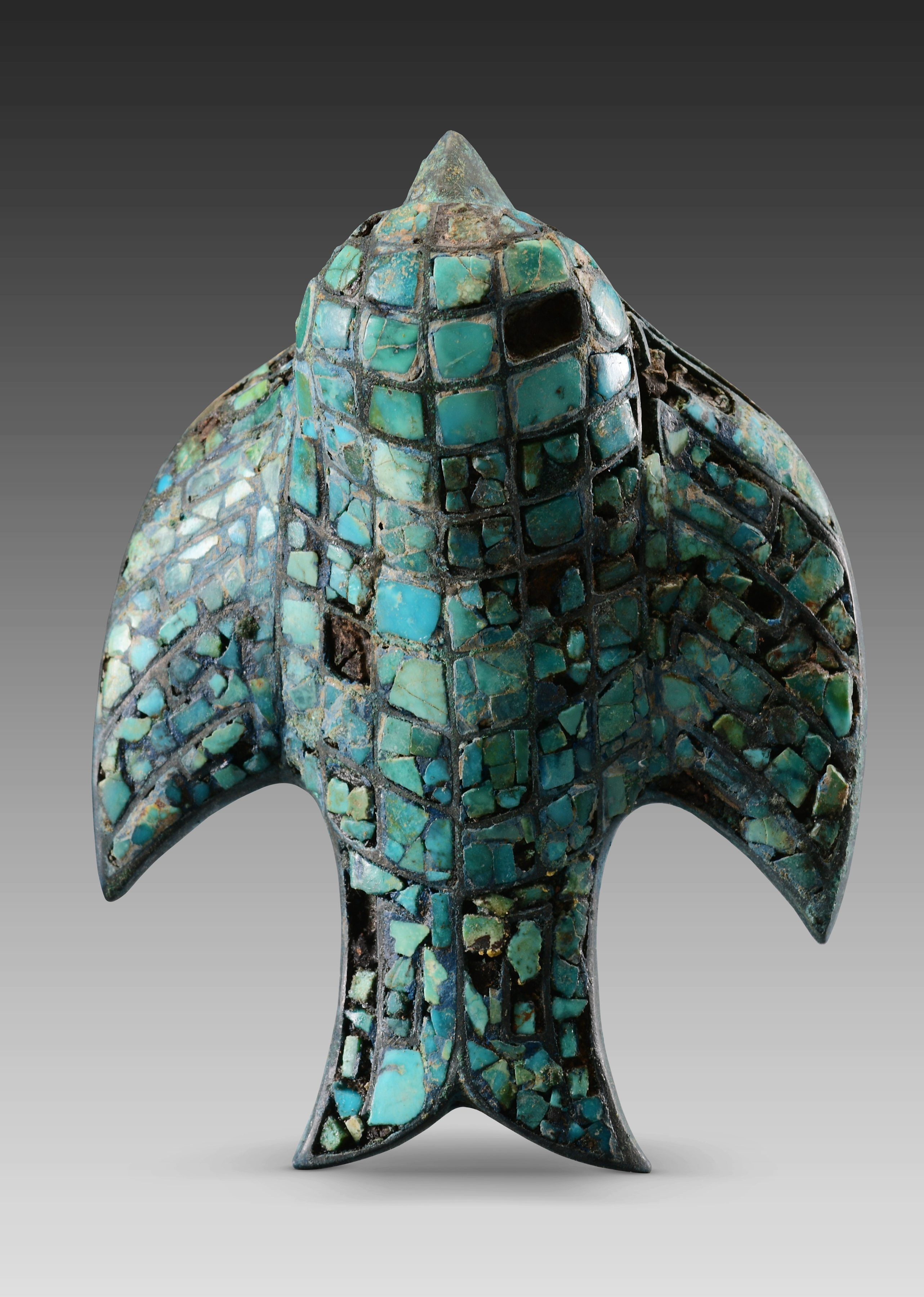Mysterious Fangguo of Shang Dynasty in Northwest China
A copper ornament inlaid with turquoise unearthed from the Zhaigou site. (PHOTO: XINHUA)
By Staff Reporters
The Zhaigou site, the ruins of a vast settlement going back to the Shang Dynasty (1600 BC-1046 BC), is one of China's top 10 new archaeological discoveries of 2023. Lying on the Loess Plateau in today's Shaanxi province, northwest China, it has an area of approximately three million square meters.
Archaeologists unearthed numerous relics with diverse functions, including a large cache of bronze artifacts, on 11 hills in the Zhaigou site. They discovered seven ruins of Fangguo, a feudal tribe and state that existed during the Shang Dynasty.
They are called so because of the oracle bone inscriptions unearthed at the Yin Ruins of the late Shang Dynasty. In these inscriptions, these tribal states are often referred to as "X Fang," hence the term "Fangguo."
The oracle bone inscriptions document a myriad of Fangguo surrounding the late Shang Dynasty court, with nearly 70 major and minor Fangguo in the north and west alone. Some of these Fangguo were powerful, maintaining a complex relationship of both enmity and friendship with the Shang Dynasty, engaging in close interactions. However, their historical records are fragmentary and unclear, making it difficult for later generations to accurately understand them.
The significant discovery of the Zhaigou site as a Shang Dynasty Fangguo provides crucial information for studying the relationship between the dynasty and its surrounding Fangguo, and the formation of the diverse yet unified Chinese civilization.



